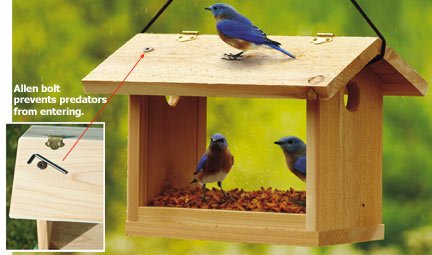

Insects, including grasshoppers, crickets, beetles, and caterpillars, make up 68 percent of a bluebird's diet, while the remaining 32 percent is fruit. Bluebirds that over-winter in the region, rather than migrate, require weather-tight roosting sites and use both natural cavities and nest boxes. In addition, many other cavity nesting species, including the European starling, house sparrow, tree swallow, and house wren, compete with bluebirds for the limited number of natural nesting cavities available. Because people have removed cavity trees from many habitats, suitable nest sites often limit the number of bluebirds in an area. Nests are usually 5 to 12 feet above the ground, but have been found as high as 20 feet. Coverīluebirds nest in natural cavities and nest boxes. They require cavities for nesting and abundant perches for feeding and resting. Bluebirds defend nesting territories 2½ to 7 acres in size. In the winter, they use grasslands, shrublands, and forest edges. Habitat Requirementsĭuring the breeding season, bluebirds use a variety of habitats, including open fields with scattered trees, farmlands, forest edges, swamps, sparsely inhabited residential areas, roadsides, fencelines, orchards, and clearings created by fire and logging. Most adults will raise two broods in a season. The adults feed the young out of the nest for another 10 days before the young are on their own. The eggs hatch within 12 to 14 days, and the young are fed in the nest by both the male and the female for 15 to 20 days. The female lays three to six pale blue eggs, which she incubates. Soon after arriving, bluebirds begin to look for suitable nesting sites. Adults often return to the same territories where they previously bred, and young from the previous year return to breed near the area where they were hatched. The first birds to arrive are males, with females arriving a short time later. Some eastern bluebirds are year-round residents in Pennsylvania, but the majority migrate south in the winter, returning to Pennsylvania in early March. Today, bluebirds have made a significant comeback primarily because of the management activities of landowners across the state.

Bluebirds increased in number as forests were cut in the early 1900s but declined sharply in the mid-1900s because of the widespread use of pesticides and competition for nest sites from house sparrows and starlings. Preferring open country, bluebirds were rare in Pennsylvania before the 1900s, when forests covered most of the state. No matter how often you see that flash of blue, it remains an exhilarating experience, and a bluebird nesting on your property is a highlight of spring.

Bluebirds are one of Pennsylvania's most beloved songbirds.


 0 kommentar(er)
0 kommentar(er)
